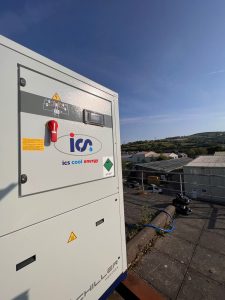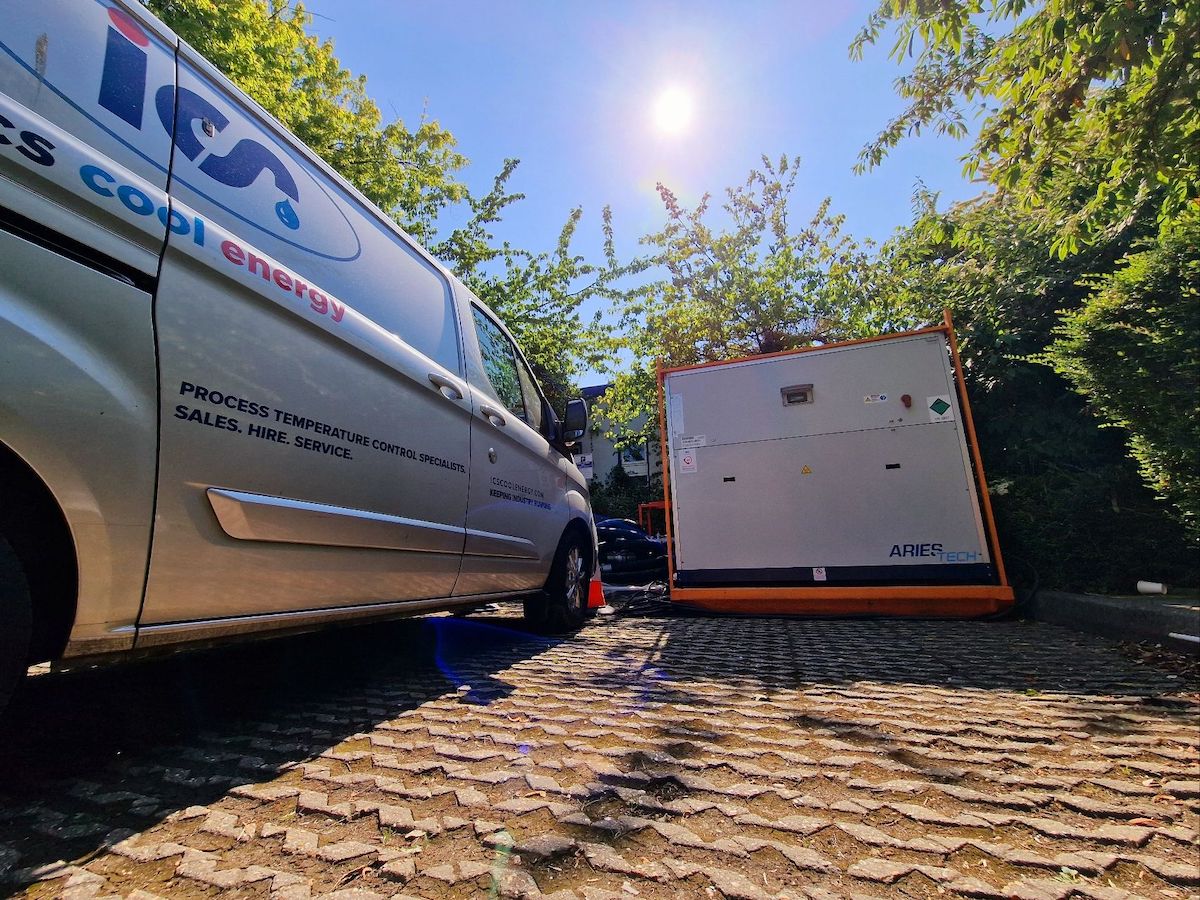 Just as an overheated car engine can cause significant issues, the loss of cooling capability from industrial chillers and cooling towers during hot weather can lead to substantial problems for manufacturers. These can include excessive downtime, damaged chiller parts, and product wastage.
Just as an overheated car engine can cause significant issues, the loss of cooling capability from industrial chillers and cooling towers during hot weather can lead to substantial problems for manufacturers. These can include excessive downtime, damaged chiller parts, and product wastage.
ICS Cool Energy UK’s country leader, Dave Palmer, looks at how to prevent unexpected failures in your process cooling equipment and minimise the production downtime, consider the following critical questions:
How old is your equipment?
Industrial chillers typically have a lifespan of around 12 years, though this can vary based on operating conditions and maintenance practices. Implementing a planned preventative maintenance (PPM) programme is essential to keep components clean and in good working order, preventing strain from temperature spikes.
With ongoing innovations and advancements in cooling and heating technologies, new equipment often comes with warranties of up to 10 years, providing greater peace of mind. For example, i-Chiller Process and Compact models commissioned by ICS Cool Energy and purchased with a PPM plan come with a 5-year warranty that covers both parts and labour.
How are you protecting your system?
Dosing your water system with glycol as an inhibitor is highly recommended. Beyond its antifreeze properties, glycol helps to maintain the condition of water flowing through your valuable chiller and heater components and pipework, contributing to longevity and efficiency
How are you monitoring your equipment?
Modern software developments allow for remote monitoring of chiller operations. You can instantly address issues such as temperatures exceeding desired control tolerances, helping to avoid costly production downtime and waste.
With secure, real-time information on the operation and running conditions of your plant machinery, you can identify energy and cost savings, as well as system inefficiencies, before they impact production.
Are you checking water quality?
An incorrect water and glycol mix in a chiller can have rapid and disastrous effects, leading to corrosion, rust build-up, system deterioration, and leaks. Additionally, scale build-up (particularly in hard water areas), algae, and debris can clog vital components forcing them to work harder, particularly in more extreme temperatures.
Conducting simple pH tests and water sampling is a good start to determine the condition of your system water. However, understanding the chemical makeup of what might look like water can be complicated. At ICS Cool Energy, we simplify this for you. We take a sample, and our water treatment specialist will issue a report with a clear plan for implementation in order to maintain your equipment or carry out a repair. All of this is done in our in-house lab facilities, whether it involves glycol, inhibitor, biocide, or a full flush.
Regular maintenance of your chiller is crucial for optimal performance and longevity. This involves:
- Removing dust, dirt, and debris
- Cleaning the condenser coils
- Checking and cleaning the air intake filter
- Inspecting and maintaining the protective coating on the condenser fins
- Washing and repairing panels and steelwork
- Identifying and fixing leaks
- Ensuring thermal insulation is in good condition.
Keeping a log of gauge readings can also help monitor the system’s performance.
We have compiled seven practical steps you can take in preparation for an annual or bi-annual maintenance visit.
Important Note:
These steps should only be undertaken while the chiller is stopped and electrically isolated. They should be performed by a competent person who has conducted a risk assessment and is fully aware of the potential hazards and necessary safety procedures.
1. Dust, dirt and grime
 Windblown dust and dirt can permeate every nook and cranny on the chiller, including its panels and the air-cooled condenser coil(s). Remove any waste, rubbish and general debris from the surrounding area and inside the chiller. This prevents debris from being drawn into the condenser air intake filter or the condenser coil itself.
Windblown dust and dirt can permeate every nook and cranny on the chiller, including its panels and the air-cooled condenser coil(s). Remove any waste, rubbish and general debris from the surrounding area and inside the chiller. This prevents debris from being drawn into the condenser air intake filter or the condenser coil itself.
2. Condenser
Any accumulation of dirt, dust and grime can lead to progressive under performance. As dirt builds up on the condenser coils, it becomes harder for the coils to transfer the heat from your process to the outside air. This forces your chiller to work harder, reducing its cooling capacity and increasing energy consumption. Additionally, the dirt imposes a greater load on the fans, resulting decreased performance and efficiency.
Dirty coils can lead to higher energy bills, increased Climate Change Levy charges
(where applicable), and a shorter lifespan for the system and its components. Use a soft hand brush or a purpose-made narrow coil brush to clean the condenser fins and coil. If the condenser is heavily fouled or the dirt is difficult to remove, contact us to arrange for a full chemical wash and straighten any fin damage.
3. Condenser intake filer
If an air intake filter panel is fitted, it should be removed, examined, and cleaned. Accumulated dirt and/or dust will have the same impact as a dirty condenser coil.
4. Protective condenser fin/coil coating
Once the fins and coil have been cleaned, examine the fin coating. If it appears to need patching or recoating, contact us to arrange for a full examination and re-treatment advice.
5. Panels and steelwork
Wash down all panels and steel work and repair or treat, as necessary. Check for water accumulation around and under any supporting structures. Inspect the condition of all supports and structures, and repair or treat as needed. Untreated dirt or mould can quickly become permanent and potentially corrosive.
6. Leaks
Inspect the chiller for leaks. Water leaks are usually self-evident and should be repaired immediately. Refrigeration leaks are much more difficult to detect and generally require examination and leak testing by a qualified refrigeration technician. However, small leaks can sometimes be identified by traces of oil directly under the source. Do not try to repair refrigeration leaks yourself – contact us to arrange an examination and leak test.
7. Insulation
Examine the condition of the thermal insulation. Make sure it is in good condition, properly fixed to the vessel/pipework, and free of condensation seepages. Repair or replace as necessary. Check all gauges and displays, and clean them as needed.
Keeping a daily or weekly log of all gauge readings can help assess the continued proper operation of the systems.
Chiller servicing and planned maintenance are preventative measures that ensure your chiller equipment remains operational and efficient throughout its maximum lifespan. Learn more about Planned Preventative Maintenance.




